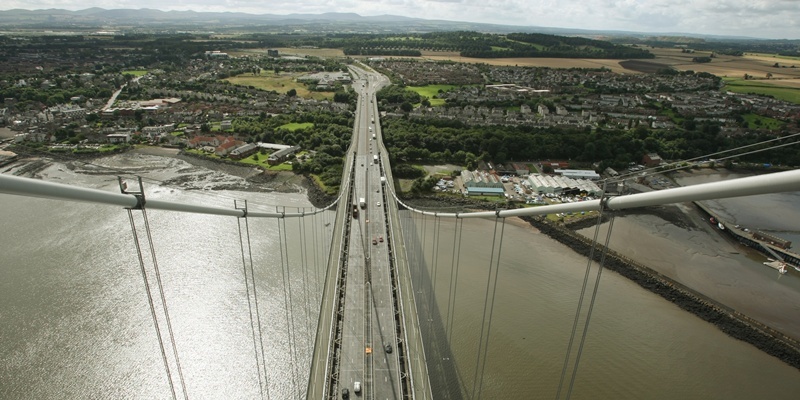The Forth Road Bridge’s chief engineer has cautioned against jumping to conclusions about the lifespan of the bridge’s corroded main cables before the results of the latest inspection are known.
Barry Colford said media reports suggesting that new reports on the condition of the cables which are currently being dried out by a dehumidification programme were available were ”misinformed”.
Some are suggesting that the groundbreaking dehumidification programme was working to such an extent that the threat from corrosion to the 47-year-old bridge was ebbing and this could mean the planned restrictions on traffic using the bridge could be postponed further.
However, Mr Colford said: ”While we are confident that our work will prove successful, there are no new findings at this stage and we must wait until this year’s internal inspection of the main cables is complete before reaching any conclusions.
”We are monitoring dry air going into the cables and dry air coming out, which is encouraging. However we won’t know how extensive an effect this had had until we open up the cables and take a look inside.”
He did confirm some good news that the inspection is on schedule and work on site will start, as planned, in April.
Results of that survey will be available later in the year, which would ”hopefully give us further confidence about the cables’ condition”, he added.
Corrosion in the main cables of the iconic bridge was discovered during the first internal inspection eight years ago. A loss of strength of around 8-10% was calculated, which was subsequently confirmed by an independent audit and by a second inspection in 2008.
Engineers installed a dehumidification system in order to slow down or halt the deterioration, which has been blowing dry air through the cables since 2009.
Urging caution, Mr Colford added: ”Dehumidification is a proven technique for preventing corrosion in steel. However, this is the first time that such a system has been retro-fitted to the main cables of a suspension bridge with existing corrosion on this scale.
”This is why we cannot be sure of success. Even if we successfully halt the corrosion, this does not guarantee that the cables will not lose further strength.
”Damage already done to the wires inside the cables cannot be repaired and there is no way of telling how many cracks will lead to breaks in future. There will always be some uncertainty and the cables will need to be monitored and inspected for the remainder of their life.”
Fife councillor Tony Martin, who is convener of bridge management for the Forth Estuary Transport Authority, added: ”It is important that we allow the engineers to complete their investigations before judging whether the problem has been solved.
”We have an excellent team working to save the main cables and there’s no doubt that they have given themselves the best possible chance of success, but they have made clear all along that there are no guarantees with such pioneering work.
”We must also wait for the results of the ongoing investigation into the anchorages and take into account the increasingly disruptive weekday maintenance that will be required due to continuing wear and tear on the Forth Road Bridge before reaching any conclusions about its long-term viability as a standalone crossing.”
